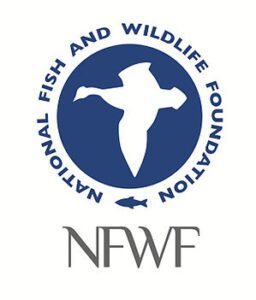The Northern Great Plains (NGP) represent one of North America’s last vast and functioning grassland ecosystems, with roughly 70% of its native habitat still intact. Covering more than 180 million acres from the Rocky Mountain foothills through the Dakotas into Nebraska, the region provides essential habitat for wildlife uniquely adapted to prairie environments. Because 99% of non-urban land is devoted to agriculture and nearly 80% is privately owned, the ecological future of the NGP is inseparable from the stewardship of ranchers, farmers, and tribal nations. Unlike western landscapes dominated by public holdings, conservation here depends on partnerships that reconcile ecological sustainability with economic realities.
Despite its scale and resilience, the NGP faces habitat conversion at rates comparable to the Amazon rainforest. In 2017 alone, more than 700,000 acres of perennial grasslands were lost, largely to row crop agriculture. Such fragmentation is the leading driver of biodiversity decline across the region. Grassland-dependent species—including the lark bunting, Baird’s sparrow, Sprague’s pipit, and western meadowlark—have experienced dramatic population losses, while McCown’s longspur has declined by nearly 95% since the 1960s. These declines underscore the urgency of coordinated, large-scale conservation to preserve ecological integrity before losses become irreversible.
Although the threat is clear, the Northern Great Plains also offer an extraordinary opportunity. Because such a high proportion of habitat remains intact, targeted interventions can simultaneously secure biodiversity and strengthen rural economies. Research demonstrates that sustainable land management—particularly rotational cattle grazing—can align ranching with conservation goals. Both livestock and native species depend on perennial grass systems, creating shared incentives for ecological stewardship. By supporting collaborative models that link economic viability with ecological health, conservation in the NGP advances not only species recovery but also the resilience of human communities and the broader fight against climate change.
 Due to both its ecological significance and the magnitude of threats facing it, the National Fish and Wildlife Foundation (NFWF) has identified the NGP as a priority conservation landscape. NFWF’s Northern Great Plains Program fosters a paradigm shift: conservation and economic land use are not mutually exclusive. Instead, they can be mutually reinforcing. The program invests strategically in the largest and highest-quality grasslands, working with ranchers, tribes, and conservation organizations to advance practices that support both ecological integrity and rural economies.
Due to both its ecological significance and the magnitude of threats facing it, the National Fish and Wildlife Foundation (NFWF) has identified the NGP as a priority conservation landscape. NFWF’s Northern Great Plains Program fosters a paradigm shift: conservation and economic land use are not mutually exclusive. Instead, they can be mutually reinforcing. The program invests strategically in the largest and highest-quality grasslands, working with ranchers, tribes, and conservation organizations to advance practices that support both ecological integrity and rural economies.
Through the program, NFWF deploys resources and expertise to ensure grasslands remain viable for future generations. Grants fund efforts to:
– increase connectivity through permanent conservation easements
– restore habitat to strengthen ecological function, and
– improve land management at landscape scales to encourage long-term stewardship
Because private ownership dominates the region, the program emphasizes partnerships with landowners, ranching communities, and tribal governments. By correcting misconceptions that economic productivity and ecological resilience are at odds, NFWF empowers local stakeholders to see conservation as integral to cultural and economic well-being.
To help further this work, AVDF awarded $350,000 to NFWF to support its 2021 Northern Great Plains competitive grant program. NFWF’s annual program distributes between $3 million and $4 million in grants ranging from $100,000 to $350,000. Federal agencies, including the U.S. Fish and Wildlife Service, USDA, and the Bureau of Land Management, provide two-thirds of this pool, while private funders contribute the remainder. AVDF’s support increased the program’s capacity, enabling 4–8 additional sub-grants in 2021.
“Environmental stewardship and human flourishing are interconnected. The Northern Great Plains Program not only protects biodiversity but also strengthens cultural traditions, advances sustainable ranching practices, and builds civic capacity across the region. It is a promising example of conservation that is locally driven and scientifically grounded,” said AVDF President Michael Murray.
During the AVDF grant period, the NGP program funded 15 projects, awarding more than $4 million in sub-grants. AVDF’s contribution supported initiatives by organizations such as the South Dakota Agricultural Land Trust, Montana Conservation Corps, World Wildlife Fund, and the Bird Conservancy of the Rockies. Collectively, these projects:
– permanently protected 56,966 acres of working rangeland through conservation easements
– restored nearly 18,706 acres of native habitat
– improved grazing management on 227,476 acres, and
– removed or improved 16.3 miles of derelict fencing that obstructed wildlife movement
NFWF manages the NGP program under a 10-year business plan that emphasizes measurable ecological outcomes, risk mitigation, and accountability. All funded projects must conduct site-level monitoring, while aggregate metrics allow NFWF to track progress against regional objectives. Increasingly, the program also evaluates social and economic outcomes, recognizing that sustainable grassland conservation requires benefits for both ecosystems and communities.
To date, results indicate that NFWF has exceeded projections for acres conserved, restored, and managed. Commitments secured by grantees—including more than 150,000 acres under obligation by the Rocky Mountain Bird Observatory alone—demonstrate strong momentum toward the program’s 2026 goals.
The NFWF’s Northern Great Plains Program exemplifies how targeted investments can amplify conservation at landscape scale while leveraging federal and private partnerships. By protecting intact grasslands, restoring degraded habitat, and supporting sustainable ranching, the program advances biodiversity, strengthens rural economies, and counters one of the fastest rates of habitat conversion in the world. The NGP initiative not only protects a fragile ecosystem but also demonstrates how conservation can flourish when aligned with the cultural and economic fabric of local communities.
Back to all Stories


